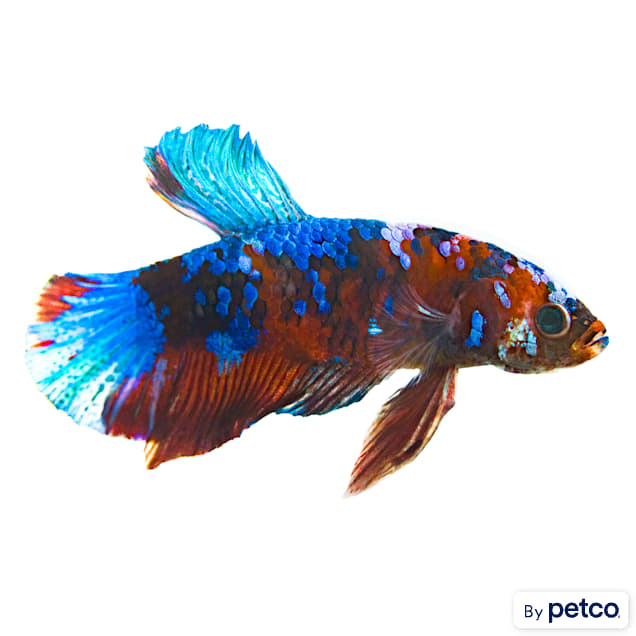Betta Fish Life-span: How to Guarantee Your Betta Lives Longer
Betta Fish Life-span: How to Guarantee Your Betta Lives Longer
Blog Article
Reproducing Betta Fish: a Comprehensive Step-By-Step Overview to Efficiently Raising Infant Bettas From Eggs to Adulthood
Reproducing Betta fish is a thorough endeavor that requires mindful preparation and implementation to guarantee the effective growth of fry from eggs to grow fish. As the male Betta diligently constructs a bubble nest and guards the valuable eggs, the subsequent phases of care and change need interest to detail and expertise of ideal methods.

Picking Breeding Pairs
When beginning on the trip of reproducing Betta fish, choosing the appropriate reproduction sets is important to achieving desirable attributes and a healthy family tree - betta fish. The initial step in this process is to identify the particular attributes you wish to improve or protect, such as shade, fin type, and body form. It is necessary to select genetically varied pairs to avoid inbreeding, which can lead to wellness problems and undesirable characteristics
Review prospective reproducing prospects very carefully. A healthy male Betta ought to exhibit vibrant shades, an energetic disposition, and well-formed fins, while the female ought to additionally show lively pigmentation and a rounded stubborn belly, indicating readiness for spawning. Observing the personality of both fish is vital, as aggressive or excessively timid people may not breed effectively.
Maintaining documents of the parent fish's ancestry can assist you track genetic traits and potential issues. Ultimately, investing time in the option procedure will substantially boost the probability of creating strong, vivid children that satisfy your reproduction goals.

Preparing the Reproduction Tank
Developing an optimum breeding environment is a key step after selecting suitable pairs for Betta fish. The reproduction storage tank need to be particularly designed to offer convenience and stimulate the all-natural breeding habits of the fish. Beginning with a container size of at least 10 gallons to make certain adequate space for both the man and women Bettas.
Preserve a gentle filtration system to keep the water clean while avoiding solid currents that can stress the fish. Furthermore, an air stone can be contributed to supply oxygenation without interfering with the water surface area way too much.
Temperature law is essential; goal for a stable range of 78-82 ° F(25-28 ° C) making use of a dependable heating unit. The pH level must be maintained in between 6.5 and 7.5, and normal water modifications are essential to make certain high water quality.
Incorporate drifting plants or spawning mops to produce concealing spots for the female, while additionally encouraging bubble nest building by the male - betta fish. Ensure the tank is cost-free from sharp decorations and any kind of prospective risks, as the well-being of the fish must always be prioritized during this vital stage of reproduction.
The Reproduction Process
Commonly, the breeding process for Betta fish entails a series of distinctive and evident habits that show readiness for reproduction. The male Betta starts by building a bubble nest at the water's surface area, which functions as a website for the fed eggs. This nest is vital, as it offers a risk-free environment for the eggs up until they hatch out.
As soon as the nest is established, the man will display courtship behaviors, such as flaring his fins and exhibiting lively shades to attract the female. The female, upon sensing the man's preparedness, will certainly react by showing upright red stripes along her body, signifying her receptiveness.
The fertilized eggs after that fall investigate this site to the bubble nest, where the male carefully collects and returns them to the nest. Following this, the male thinks responsibility for protecting the nest and making certain the safety and security of the eggs till they hatch out, normally within 24-36 hours.
Caring for Betta Fry
Taking care of Betta fry needs cautious interest to their setting and nutrition to guarantee healthy and balanced development and development. After hatching, Betta fry are extremely tiny and prone, necessitating a stable and tidy environment. Keeping a water temperature level between 78 ° F and 80 ° F is essential, as Betta fry thrive in cozy problems. Furthermore, ensure that the water is devoid of dangerous toxins; regular water adjustments of 10-20% are suggested to maintain ideal water top quality.
Feeding Betta fry is similarly vital. Feed them tiny amounts several times a day, being careful not to overfeed, which can lead to water top quality concerns.
Transitioning to Adult Bettas
As Betta fry fully grown, transitioning them to grown-up Bettas is an essential phase that calls for cautious administration of their atmosphere and social interactions. This process generally begins when the fry get to around six weeks old, at which point they can be progressively presented to a much more structured living setting.
To promote this shift, it is necessary to make sure that the water parameters-- such as temperature, pH, and ammonia levels-- are optimal and secure. Adult Betta fish prosper in warm water (around 78-80 ° F) with a pH of 6.5 to 7.5. Progressively adjust the fry to these problems to minimize stress and anxiety.
Social communications are an additional key variable; check my blog male Bettas are infamously territorial and hostile. It is advisable to different males right into specific storage tanks as they develop. Female Bettas can be housed together, however care must be taken to monitor for signs of aggression.
In addition, nutritional adjustments should be made as the fry expand. Include top notch pellets and live foods to sustain their development and wellness. By handling these aspects effectively, you can promote a successful change to the adult years for your Betta fish.

Verdict
Successful reproduction of here are the findings Betta fish needs mindful attention to detail throughout the entire process, from picking genetically diverse sets to supplying optimal treatment for fry. In addition, a balanced diet regimen and gradual adjustment to grown-up environments are vital for the development and development of Betta fish.
Report this page